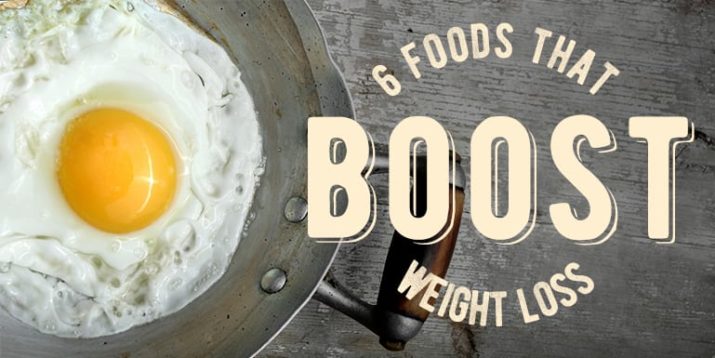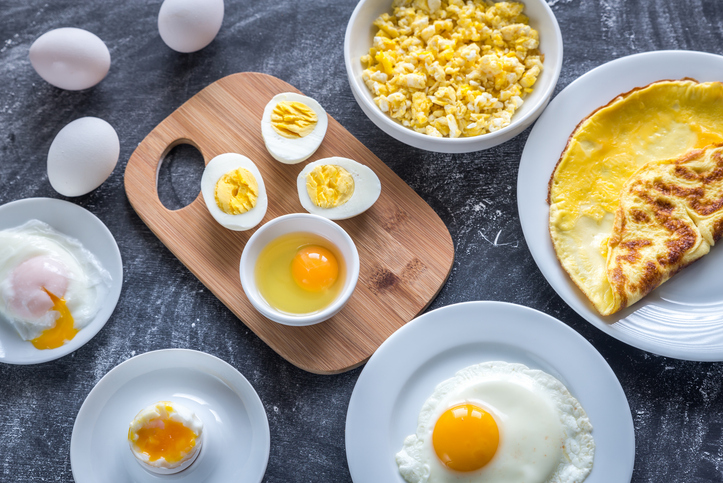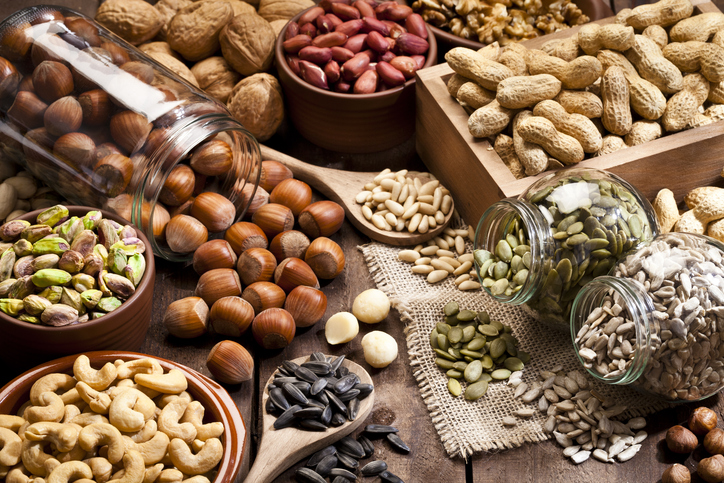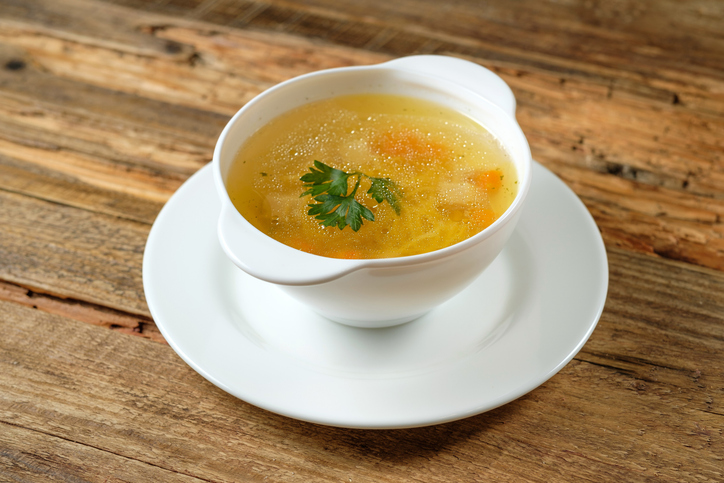6 Filling Foods That Boost Weight Loss

You know the feeling: You’re committed to losing weight and eating healthier, but then you just want to eat everything, all the time.
Is it actually possible to lose weight without being in a constant state of hangry?
In word: Yes.
One of the keys to successful weight loss is to fuel your body with filling foods that support your weight-loss efforts and satisfy your belly, which will prevent the kind of wanton bingeing that can sabotage your goals. Here are six types of foods to eat that can accomplish both those tasks:
1. Fish

Eating protein makes you feel full in the short term, which may help you lose weight in the long term. Fish is a great source of protein and research suggests that some fish may more filling than chicken and beef. Fish also has less saturated fats and more healthy fats like omega-3s, which can help maintain a healthy cardiovascular system.
Simply put, it takes your body longer to break down protein and convert it into energy than it does to break down simple carbs, so eating protein can help you feel fuller longer, making you less likely to snack on junk later on.
But whatever your preferred protein source is, try to eat a high-quality protein at every meal — for example, eggs with breakfast, Shakeology as a snack, and four to six ounces of animal or plant protein for lunch and dinner.
An easy way to make sure you’re getting enough protein every day is to use a portion-control eating plan; that way you don’t have to think about how much you need to eat at each meal.
Need some ideas? Try these:
8 High-Protein Snacks When You’re On the Go
Is Goat Meat the Hot New Protein?
Apple Cinnamon Protein Pancakes
2. Legumes

Most people aren’t eating enough of that can actually help with weight loss: Fiber.
Fiber is a form of carbohydrate found in plants that helps us feel fuller on fewer calories. Fiber feeds the “good” bacteria in our guts, keeps things moving through the GI tract, and can help maintain healthy blood sugar levels by slowing the absorption of sugar after a meal.
Legumes (split peas, fresh peas, peanuts ) and pulses, which are dried legumes, (dried lentils, chickpeas) are packed with fiber, low in fat, and are a good source of protein, too. Fruits, vegetables, and whole grains all contain high amounts of fiber as well.
The 2015–2020 Dietary Guidelines for Americans recommends that women (age 19–50) eat anywhere from 25–28 grams of fiber daily. For men (age 19–50), that range is a little higher — about 30–34 grams each day.
Lentils and chickpeas are an easy way to help you hit your daily goal. A half cup of cooked lentils has eight grams fiber and can easily be thrown into soups or salads. Not a lentil fan? A half cup of chickpeas also has eight grams of fiber; make homemade hummus (or black bean hummus). Or pop crispy baked chickpeas in your mouth when you crave something crunchy and a bit salty.
Find out what other high-fiber foods you may be missing out on and how to add them to your diet.
3. Grapefruit

Eating half a grapefruit or drinking eight ounces of fresh grapefruit juice three times a day before meals can boost weight-loss efforts significantly, according to researchers at California’s Scripps Clinic. In the 12-week study, participants ate or drank grapefruit juice lost almost four pounds.
Studies suggest a possible explanation: Grapefruit is a potent source of pectin, a soluble fiber that can help slow digestion and suppress appetite, leaving you feeling fuller longer, and reducing fat storage in the body. But you’ll only find pectin in the pulp, so drink it pulpy.
This winter fruit is packed with other benefits as well: Grapefruit is also great source of vitamin C, and pink and red varieties contain the phytonutrients beta carotene and lycopene, both of which act as antioxidants in the body and can help support your immune system. (Note: Grapefruit can interact with some medications, so check with your doctor before you dig in.)
Fruits in general are a filling choice because of their fiber content. For example, one cup of raspberries contains eight grams of fiber. All the little seeds might be annoying when they get stuck in your teeth, but that’s where the bulk of the fiber comes from in this fruit.
4. Eggs

Considered a “perfect” protein by many, eggs contain all essential and non-essential amino acids — and they’re perfect for weight loss. A 2005 study found that people who ate eggs for breakfast felt more full and ate significantly less food for the next 36 hours, compared to subjects who ate a bagel for breakfast.
Eggs also contain important vitamins and minerals, and are an inexpensive source of high-quality protein, compared to beef or chicken. That doesn’t mean you have to eat just scrambled eggs every day: Check out these 13 healthy egg recipes. (And while you’re at it, find out what all those egg carton labels actually mean.)
Try these egg recipes:
Tex-Mex Scrambled Eggs and Veggies
How to Cook the Perfect Hard-Boiled Egg
5. Nuts

Nuts are nutrition powerhouses that are ideal for when you’re trying to lose weight, eat healthy, and curb hunger. Nuts are a good source of monounsaturated fats, or MUFAs, which can help you maintain healthy cholesterol levels and absorb fat-soluble vitamins like A, D, E, and K.
Plus, they’re loaded with protein and fiber, making them a great go-to snack. But remember to eat them in moderation: Nuts are calorically dense, so a little goes a long way. Raw is best, since roasted nuts are often roasted with heavy oils and salt.
There’s no end to the ways you get your nuts in: add them to oatmeal, roast them and toss on a salad, or make incorporate them in a batch of Shakeology energy balls.
If you’re following the 21 Day Fix eating plan, the guide lists the specific amounts of particular nuts that can go in your blue container.
6. Broth-based Soup

In addition to being warming and delicious, soups are also a good way to satisfy hangry pangs. Foods with high water content will fill you up with minimal calories, according to The Centers for Disease Control and Prevention (CDC). And if you make your own broth-based soup, you’ll be in control of both the ingredients and the sodium content — absolute musts for healthy eating.
Elevate your soup even further by making your own broth. If you make big batch, you can use it any recipe that calls for broth, not just soup. You can even drink it on its own — even though brothing is one of the latest “it” trends in the wellness world, the concept of drinking broth for its health benefits has been staple in many cultures long before it became trendy.
If your goal is to lose weight, that doesn’t mean you have to go hungry or eat sad, unfulfilling foods. A truly balanced diet is rich in whole, filling foods that will satisfy your stomach and your cravings for flavorful, delicious meals that are good for you, too.
